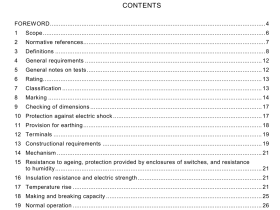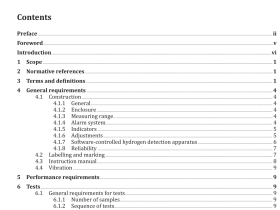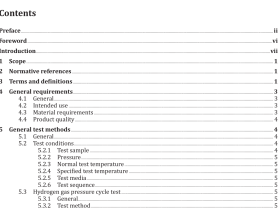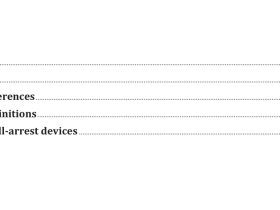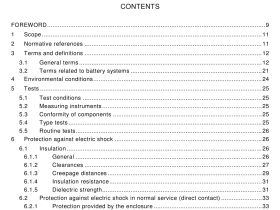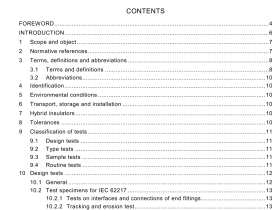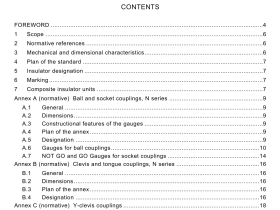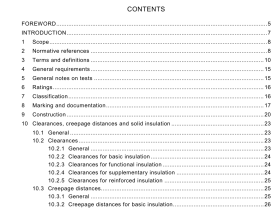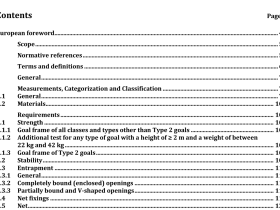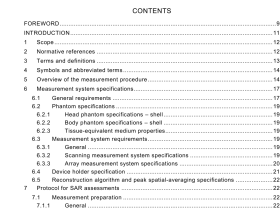AS 16110.1 pdf download
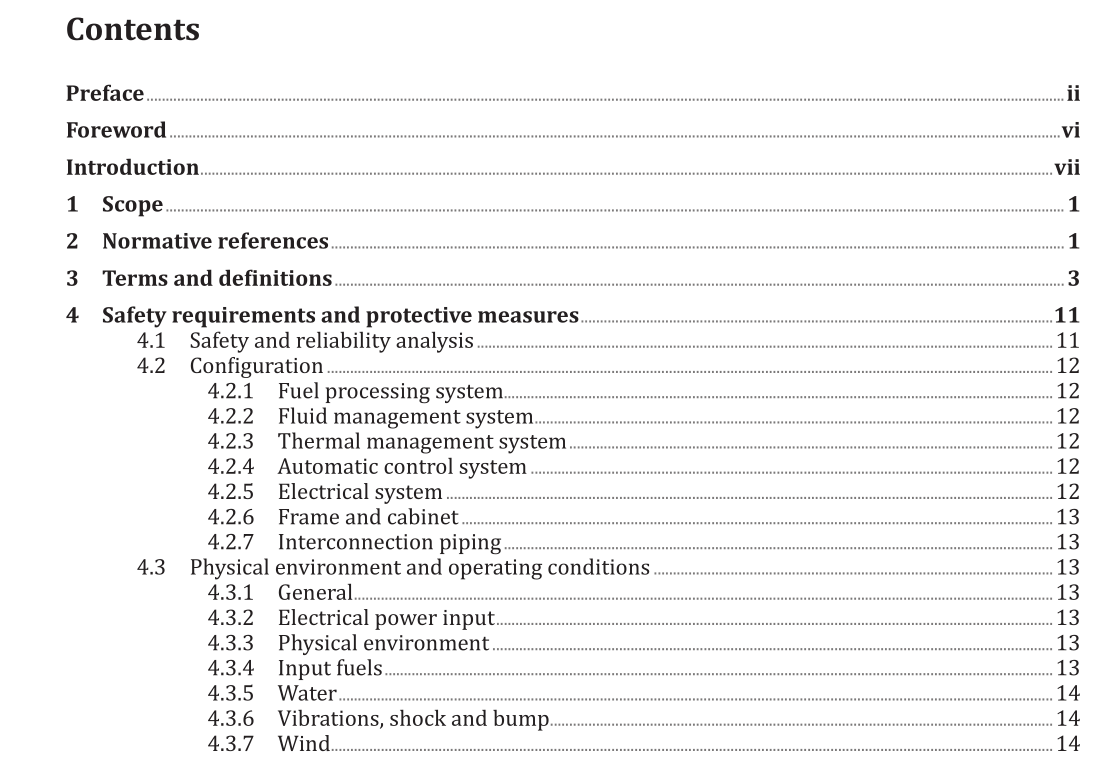
AS 16110.1 pdf download.Hydrogen generators using fuel processing technologies
1 Scope
This part of ISO 16110 applies to packaged, self-contained or factory matched hydrogen generation systems with a capacity of less than 400 m 3 /h at 0 °C and 101,325 kPa, herein referred to as hydrogen generators, that convert an input fuel to a hydrogen-rich stream of composition and conditions suitable for the type of device using the hydrogen (e.g. a fuel cell power system or a hydrogen compression, storage and delivery system). It applies to hydrogen generators using one or a combination of the following input fuels: — natural gas and other methane-rich gases derived from renewable (biomass) or fossil fuel sources, e.g. landfill gas, digester gas, coal mine gas; — fuels derived from oil refining, e.g. diesel, gasoline, kerosene, liquefied petroleum gases such as propane and butane; — alcohols, esters, ethers, aldehydes, ketones, Fischer-Tropsch liquids and other suitable hydrogen- rich organic compounds derived from renewable (biomass) or fossil fuel sources, e.g. methanol, ethanol, di-methyl ether, biodiesel; — gaseous mixtures containing hydrogen gas, e.g. synthesis gas, town gas. This part of ISO 16110 is applicable to stationary hydrogen generators intended for indoor and outdoor commercial, industrial, light industrial and residential use. It aims to cover all significant hazards, hazardous situations and events relevant to hydrogen generators, with the exception of those associated with environmental compatibility (installation conditions), when they are used as intended and under the conditions foreseen by the manufacturer. NOTE A list of significant hazards and hazardous situations dealt with in this part of ISO 16110 is found in Annex A. This part of ISO 16110 is a product safety standard suitable for conformity assessment as stated in IEC Guide 104, ISO/IEC Guide 51 and ISO/IEC Guide 7.
3 Terms and definitions
For the purposes of this document, the following terms and definitions apply. 3.1 air‑rich condition mixtures of fuel and air, in which the air content is greater than that of a stoichiometric mixture Note 1 to entry: Air-rich conditions are used when complete fuel reaction is intended (e.g. in flame burners).3.2 air‑rich system system using air-rich conditions 3.3 ambient temperature temperature of the medium surrounding a device, item of equipment or installation 3.4 auto‑ignition phenomenon in which a mixture of gases, vapours, mists, dusts or sprays ignites spontaneously with no external ignition source [SOURCE: ISO/TR 15916:2004] 3.5 auto‑ignition temperature lowest temperature at which auto-ignition occurs [SOURCE: ISO/TR 15916:2004] 3.6 auto‑thermal reforming coupling of partial oxidation and steam reforming 3.7 burner control system system that monitors the operation of fuel burners, which is comprised of a programming unit and a flame detector, and which may include an ignition source and/or ignition device 3.8 cabinet rigid structure that may contain the hydrogen generator that protects it against specific environmental and climatic conditions and incidental contact by people and livestock and that may also provide protection to people and livestock against incidental contact with hazardous parts or materials 3.9 catalytic partial oxidation exothermic conversion of a hydrocarbon with a small quantity of air into hydrogen over a catalyst 3.10 combustible gas, liquid or vapour gas, liquid or vapour which, when mixed with air or oxygen, is capable of propagating flame away from the source of ignition when ignited 3.11 commercial relating to the use of hydrogen generators by laymen in non-manufacturing business facilities such as stores, hotels, office buildings, educational institutes and refilling stations 3.12 concealed location location that cannot be accessed without damaging permanent parts of a building structure or a finish surface Note 1 to entry: Spaces above, below or behind readily removable panels or doors are not considered as concealed.
